#nhair simulation
Explore tagged Tumblr posts
Text
- ABOUDIAMOND Animation Studio - www.youtube.com/@aboudiamond
0 notes
Text
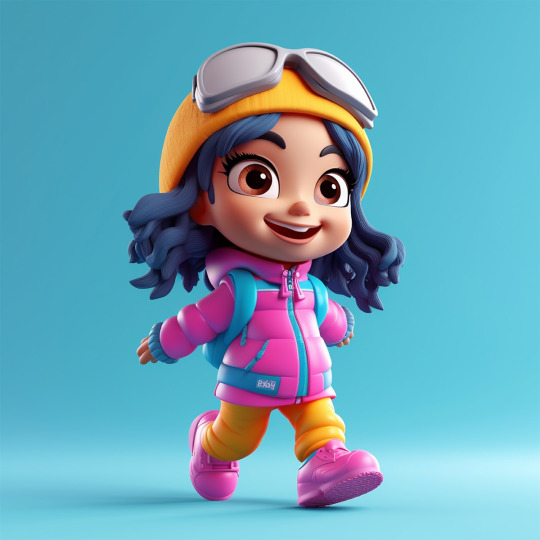
Working with Maya: Industry Standard Tools
Autodesk Maya, often referred to simply as Maya, is one of the most powerful 3D modeling, animation, simulation, and rendering software tools available today. Widely adopted by professionals in the fields of animation, gaming, visual effects (VFX), and virtual production, Maya has earned its reputation as an industry-standard tool. For aspiring artists, joining an animation academy in Pune can be a great way to gain hands-on experience and master this powerful software. Its extensive feature set, customizability, and cross-platform availability make it indispensable for artists and technical experts alike. In this article, we explore the key tools and features that make Maya a staple in creative industries.
1. Modeling Tools: Creating Detailed 3D Assets
Maya’s 3D modeling capabilities are second to none, enabling artists to craft intricate and detailed assets for films, games, and animations. Whether working on characters, environments, or props, Maya provides a comprehensive suite of tools for polygonal modeling, NURBS modeling, and subdivision surfaces.
Polygonal Modeling: Maya offers robust polygonal modeling tools, including extrusion, beveling, and sculpting. Artists can quickly create complex shapes using advanced symmetry and topology options.
NURBS and Curves: NURBS modeling in Maya is ideal for creating smooth, organic shapes like car bodies or product designs. The ability to manipulate curves and surfaces precisely makes it a favorite for industrial design.
UV Mapping: Efficient UV unwrapping tools help streamline the texturing process. Artists can flatten and arrange UVs with tools like Auto Seams and Unfold, ensuring that textures wrap around models seamlessly.
2. Animation Tools: Breathing Life into Characters and Scenes
Animation is Maya’s hallmark, with tools designed to meet the demands of high-quality productions.
Keyframe Animation: Maya’s intuitive graph editor and dope sheet allow animators to control timing and transitions with precision. Whether crafting subtle facial expressions or dynamic action sequences, animators have full control.
Rigging and Skinning: Rigging tools let artists create skeletons and control rigs for characters and creatures. Skinning features, like geodesic voxel binding, help in accurately attaching models to rigs, ensuring natural movement.
Motion Capture Integration: Maya supports motion capture data, making it easy to integrate realistic human and creature movements into projects. This feature is widely used in VFX-heavy films and AAA games.
3. Simulation Tools: Creating Realistic Effects
Simulation plays a critical role in creating lifelike visual effects. Maya’s simulation tools allow artists to craft dynamic and interactive scenes with ease.
Bifrost for Fluids: Bifrost is Maya’s powerful fluid simulation framework. Artists can simulate water, smoke, fire, and other particle-based effects with incredible realism.
nCloth and nHair: Maya’s nCloth and nHair systems are essential for simulating fabric and hair. These tools use dynamic solvers to mimic real-world physics, making characters and scenes more believable.
Bullet Physics: For rigid body and soft body dynamics, Maya integrates the Bullet physics engine. This is particularly useful for creating destruction effects, such as shattering walls or collapsing buildings.
4. Rendering Tools: Achieving Cinematic Quality
Maya includes world-class rendering solutions to bring projects to life with stunning visuals.
Arnold Renderer: Arnold, the default renderer in Maya, provides physically-based rendering capabilities. Its user-friendly interface and GPU/CPU rendering options make it versatile for artists.
Viewport 2.0: For real-time rendering previews, Viewport 2.0 is an excellent tool. It allows artists to evaluate lighting, shading, and effects directly in the workspace.
Custom Shading Networks: Maya’s Hypershade editor lets users build complex shading networks. This flexibility is vital for achieving specific artistic looks.
5. Scripting and Customization: Tailoring Maya to Your Workflow
One of Maya’s greatest strengths lies in its customizability. Through scripting and plug-ins, users can adapt the software to their unique workflows.
MEL and Python: Maya Embedded Language (MEL) and Python scripting allow users to automate repetitive tasks, create custom tools, and integrate Maya into larger pipelines.
API Access: For studios with proprietary workflows, Maya’s extensive API access enables deep customization and integration with other software.
6. Pipeline Integration: Seamless Collaboration
In professional environments, Maya often serves as a central hub for production pipelines.
Interoperability: Maya’s compatibility with formats like FBX, OBJ, and Alembic ensures smooth file transfers between different software, such as ZBrush, Houdini, and Unreal Engine.
Collaborative Tools: Tools like Referencing and Scene Assembly make it easier for teams to work on large projects. Changes made to assets are updated automatically in all instances.
7. Learning Maya: Building a Career in 3D
With Maya being an industry standard, learning this tool is crucial for aspiring 3D artists and animators.
Educational Resources: Maya offers extensive documentation and tutorials, both from Autodesk and third-party creators. Online courses and certifications provide structured learning paths.
Job Opportunities: Proficiency in Maya opens doors to careers in film studios, game development companies, advertising agencies, and more.
Conclusion
Autodesk Maya’s reputation as an industry-standard tool is well-deserved. Its expansive feature set, coupled with its adaptability, makes it an indispensable software for professionals in animation, VFX, and gaming. Whether you're sculpting a character, animating a sequence, or crafting stunning visual effects, Maya provides the tools you need to bring your vision to life. This is why Maya is often a core component of the curriculum at many animation institutes in Pune and around the world. For anyone looking to break into the 3D world, mastering Maya is a significant step toward a successful career.
0 notes
Text
Forefront 7
An article on 80. lvl offered insight into the project of Nick Gaul. He was inspired by the "Masters of the Universe" character King Grayskull and aimed to bring the character to life using Unreal Engine and Maya. The artist collaborated with Chay Johansson, who handled CFX and simulation, to push their understanding of character creation and animation in Unreal Engine.
Starting with a generic MetaHuman model, the character was exported to Maya for rigging and then used in Unreal for motion testing and simulation. The character’s wardrobe and hair were simulated using a combination of tools like Ziva, nCloth, and nHair, with XGen used for hair grooming. For the facial rig, a MetaHuman face was created and then customized to match the unique features of King Grayskull using Wrap3 and Maya.
The facial motion was driven by the Live Link app, allowing the artist to capture and apply their own facial performance to the character. Once all animations were completed, the character and simulations were exported as USD and Alembic files for lighting and final setup in Unreal.

King Grayskull (Gaul, 2024b)
The creator also developed a method to create the character's dreaded hair, focusing on efficiency and control to avoid overloading Unreal Engine. The final scene was built quickly using Quixel Bridge assets, with custom elements created in ZBrush and textured in Substance 3D Painter.
I think, this project showcases a high level of skill, creativity, and technicality. The decision to use MetaHuman as a foundation and then customize it to fit King Grayskull's unique design is a smart move, leveraging existing tools while pushing the boundaries of what's possible in Unreal Engine. The collaboration with Chay Johansson adds another layer of depth, particularly in the complex simulations of hair and clothing, which are often challenging aspects of character creation.
Overall, this project reflects a solid blend of artistic vision and technical execution. It pushes the boundaries of what's achievable with current tools and workflows, particularly in Unreal Engine, and serves as a great example of how to bring a character to life in a way that's both visually stunning and technically possible.
Gaul, N. (2024a). Character Production in Unreal Engine’s MetaHuman & XGen. Available at: https://80.lv/articles/character-production-in-unreal-engine-s-metahuman-xgen/.
Gaul, N. (2024b). King Grayskull. Available at: https://www.artstation.com/artwork/49rArq.
0 notes
Text
Character Production in Unreal Engine: Integrating MetaHuman and XGen
The evolution of character production in game development has been significantly influenced by tools like Unreal Engine's MetaHuman and XGen. A recent project by Nick Gaul, recreating the character King Grayskull, showcases the potential of combining these technologies with traditional techniques to create highly detailed and animated characters.
MetaHuman as a Foundation
Gaul's workflow began with Unreal Engine's MetaHuman as the base for character creation. This approach leverages pre-existing data and rigging, providing a solid foundation for custom character development. The MetaHuman mesh was exported to Maya, allowing for further customization while retaining the benefits of the MetaHuman system.
Advanced Rigging and Animation
The project demonstrates a sophisticated approach to rigging and animation:
Custom rigging in Maya
Utilization of Unreal's IK Retargeting for motion warping
Integration of various simulation techniques including Ziva, nCloth, and nHair
This multi-software approach allowed for complex simulations of hair and clothing, enhancing the character's realism and dynamism.
Facial Rigging and Motion Capture
A notable aspect of the project was the facial rigging process:
Creation of a MetaHuman face in Unreal Engine
Refinement in Maya using Bridge
Use of Wrap3 for precise 1-to-1 matching with custom geometry
This method enabled the use of live facial motion capture data while maintaining the flexibility of the MetaHuman facial rig.
Innovative Hair Creation
Gaul's approach to creating King Grayskull's distinctive dreadlocks demonstrates creative problem-solving in game character design:
Focus on the outer shell of each dread to reduce complexity
Use of a template system for efficient replication
Application of Maya XGen for detailed grooming
Export as Alembic caches for integration into Unreal Engine
This technique balanced visual fidelity with performance considerations, crucial for real-time rendering in game engines.
Integration with Unreal Engine
The final stages of the project highlight the strengths of Unreal Engine in character production:
Seamless integration of custom assets with Quixel Bridge resources
Efficient shader and lighting setup
Rapid environment creation
Gaul's project demonstrates how Unreal Engine can serve as a central hub, bringing together various aspects of character and environment creation into a cohesive whole.
This case study illustrates the evolving landscape of character production in game development, showcasing how artists can leverage cutting-edge tools like MetaHuman while incorporating traditional techniques and custom solutions to achieve unique and highly detailed character designs.
Reference:
Gaul, N., 2024. Character Production in Unreal Engine's MetaHuman & XGen. [online] 80 Level. Available at: https://80.lv/articles/character-production-in-unreal-engine-s-metahuman-xgen/
0 notes
Text
3ds Max vs Maya: Detailed Comparison of Features and Capabilities
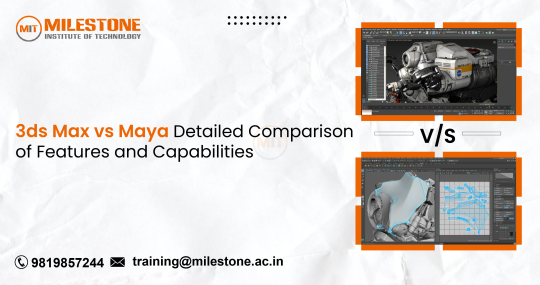
When it comes to 3D modeling, animation, and rendering, two names often come up: Autodesk's 3ds Max and Maya. Both are industry-standard tools used by professionals worldwide, from game developers and filmmakers to architects and designers. However, each software has its unique strengths and nuances that make it better suited for certain tasks and workflows. In this detailed comparison of 3ds Max vs Maya, we'll explore the features and capabilities of 3ds Max and Maya to help you decide which one might be the best fit for your needs.
User Interface and Ease of Use
3ds Max
3ds Max is known for its user-friendly interface, which makes it particularly popular among beginners and intermediate users. The software features a customizable and intuitive UI with a wide array of toolsets that are easily accessible. Its modifier stack system allows for non-destructive editing, making it easier to experiment and iterate on designs.
Maya
Maya, on the other hand, has a steeper learning curve but offers immense flexibility and power once mastered. The interface is highly customizable, allowing users to tailor the workspace to their specific needs. Maya’s node-based architecture provides a deeper level of control, which is highly beneficial for complex animations and simulations. However, this can be daunting for new users.
Modeling Capabilities
3ds Max
3ds Max excels in polygon modeling and is often the go-to choice for architectural visualization, game development, and industrial design. Its precision and control in handling vertices, edges, and faces make it ideal for creating detailed and complex models. The software also includes robust spline-based modeling tools, which are useful for creating smooth and flowing surfaces.
Maya
Maya is highly regarded for its organic modeling capabilities, making it a favorite among character artists and animators. Its advanced sculpting tools and ability to handle high-resolution meshes allow for the creation of intricate and lifelike models. Maya’s NURBS modeling tools are also powerful, enabling the creation of smooth, mathematically-defined surfaces, which are crucial for character rigging and animation.
Animation and Rigging
3ds Max
3ds Max offers solid animation tools and is particularly strong in keyframe animation. Its Character Studio feature provides an efficient rigging and animation system, especially for bipedal characters. The software also includes CAT (Character Animation Toolkit), which simplifies the process of rigging and animating characters.
Maya
Maya is renowned for its superior animation and rigging capabilities. It is the industry standard for character animation in film and television, thanks to its advanced rigging tools and flexibility. Maya’s HumanIK system and powerful skeleton rigging tools enable precise control over character movements. Additionally, its animation layers and nonlinear animation capabilities offer animators extensive creative freedom.
Dynamics and Simulation
3ds Max
3ds Max provides a range of dynamics and simulation tools, including particle systems, cloth simulation, and rigid body dynamics. The MassFX toolset integrates these features, allowing for complex physical simulations. While capable, 3ds Max’s dynamics tools are generally considered less advanced than Maya’s.
Maya
Maya stands out in the realm of dynamics and simulation. Its nDynamics system, including nCloth, nHair, and nParticles, allows for highly detailed and realistic simulations. Maya’s Bifrost procedural effects platform enables the creation of complex simulations like fluids and smoke. These capabilities make Maya a preferred choice for visual effects artists.
Rendering
3ds Max
3ds Max offers robust rendering capabilities with its native Arnold renderer and the legacy Scanline Renderer. The integration with third-party renderers like V-Ray and Corona enhances its rendering power, making it a strong contender for architectural visualization and product design. The ActiveShade interactive rendering feature allows users to see real-time updates as they adjust lighting and materials.
Maya
Maya also features the Arnold renderer, providing high-quality rendering outputs. Its integration with other render engines, such as RenderMan and Redshift, makes it versatile for different production needs. Maya’s Hypershade material editor and extensive shader networks give artists fine control over textures and materials, essential for achieving photorealistic results.
Scripting and Customization
3ds Max
3ds Max supports MAXScript, a scripting language that allows users to automate repetitive tasks and create custom tools. While powerful, MAXScript is generally considered less flexible than Maya’s scripting options.
Maya
Maya excels in scripting and customization, supporting both MEL (Maya Embedded Language) and Python. This dual-language support provides unparalleled flexibility for creating complex scripts and custom tools, making it a favorite among technical directors and pipeline developers.
Industry Use and Integration
3ds Max
3ds Max is widely used in architecture, product design, and game development. Its integration with other Autodesk products, such as AutoCAD and Revit, makes it a preferred choice for architectural visualization and engineering workflows.
Maya
Maya is the tool of choice for the film and television industry, especially for character animation and visual effects. Its extensive toolset and flexibility make it ideal for high-end productions and large studio environments.
Conclusion
Choosing between 3ds Max and Maya ultimately depends on your specific needs and industry. If you are focused on architectural visualization, product design, or game development, 3ds Max’s user-friendly interface and robust modeling tools may be more suitable. On the other hand, if you are working in film, television, or character animation, Maya’s advanced animation and simulation capabilities provide the depth and flexibility required for these demanding fields.
Both software packages offer powerful tools and features that can cater to a wide range of 3D design and animation tasks. Understanding their strengths and how they align with your workflow will help you make the best choice for your projects.
0 notes
Text
Character Modeling...p1
I started working on my characters for my short film for school (technically starting early-- maybe a good thing, maybe not...)
Luckily I get free/cheap licenses for these expensive programs that are required to even function as a 3D artist with my tuition (which is way more expensive than those licenses ever would have been...)
Anyway-- to start, I modeled a character in zbrush. I save a lot of backups, so I can go back and see most of the steps of my process (pics below)
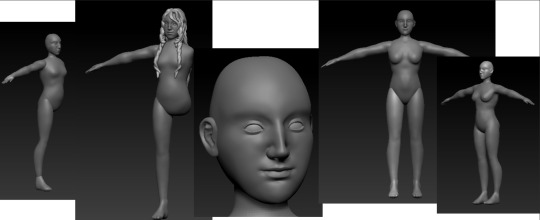
Then I brought the highres mesh into maya, did a little retop fun where I zoned out for like 3-5 hours as I made my cute little loops and such:
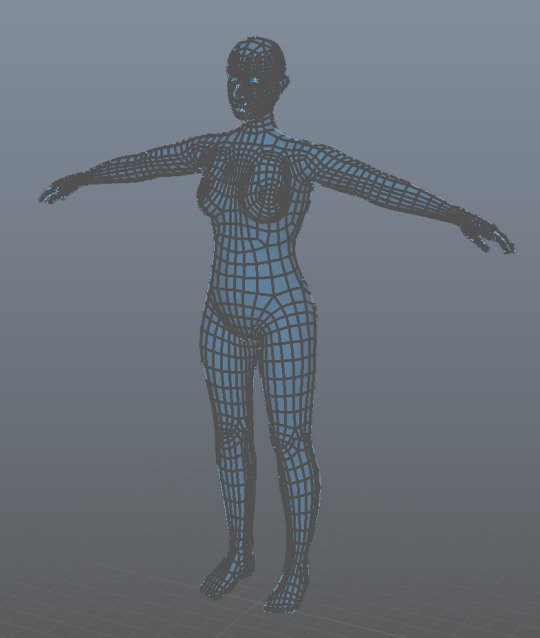
Then the whole operation was brought back to zbrush for that sweet sweet projection action to then bake maps in substance...(lowres(subdivided a ton but pre-projection) vs highres mesh below)
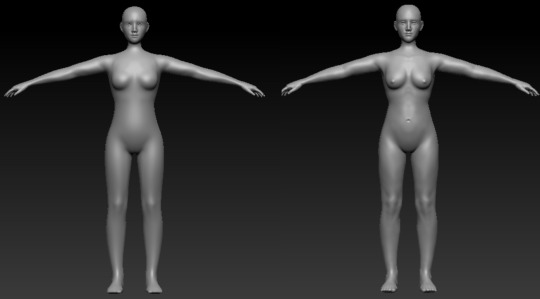
So I imported the maya retopologized file into substance, baked my mesh, and got to work painting by hand <3 (base color display on left, material display on right)
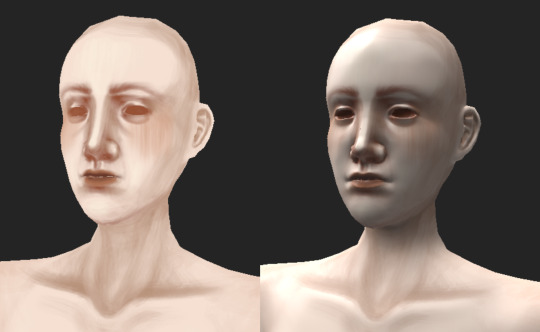
She's beautiful! For my first real attempt at painting textures, I think it looks pretty good, if a bit scary without... hair and eyes and such.
And I'm realizing the retop job I did might not have enough topology, especially since I'm planning on using her for a short film, so I didn't really need to worry about having too many verts or anything, especially since she has soo few that I can see issues around the edges of the geometry where (I'm assuming) the normal maps are adding shadows to where the geometry oversteps the map, for example this black line on her arm:
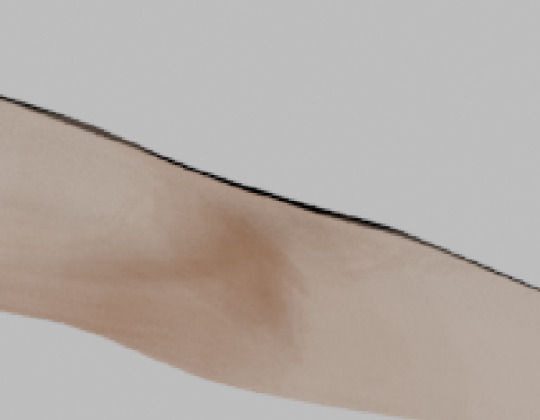
But I'm not even sure if I'm going to use the normal maps anyway because I want to experiment with trying to make the renders look painted/flat (rip to all that sculpting work... at least it helped me figure out how to paint details in substance even if I don't end up using the map)
...
So onto hair! I wanted dynamic hair so her gorgeous locks could blow in the simulated wind, and I wanted her to have curly hair. When I looked up how to use nHair in maya, I saw people recommend xgen. I have some limited experience in xgen thanks to one class of one course I took last semester, but really I had to relearn it through a YouTube video (thank you J Hill on Youtube! linked at end of post). It seems like I might've gotten rid of the file that had my xgen attempt so I don't have a picture to show, but... my girl was balding, and xgen wasn't letting me create maps because of issues with the file paths that I coudn't resolve despite going through the path and not finding any issues?? so I gave up. I tried to mess around with it for a bit, but really xgen wouldn't have fit the style I was going for anyway. I wanted chunky hair that I could paint textures for. To fix the mess I made, I would've needed time, and though it would've been good practice and a learning experience, I really wanted to focus on finishing my project following the intended aesthetic than branching out and forgetting about my original goal. So, raincheck xgen. We'll meet again on another day. To make up for no xgen pics, heres a screenie from the file I do have where I tried paint effects on my hair curves:
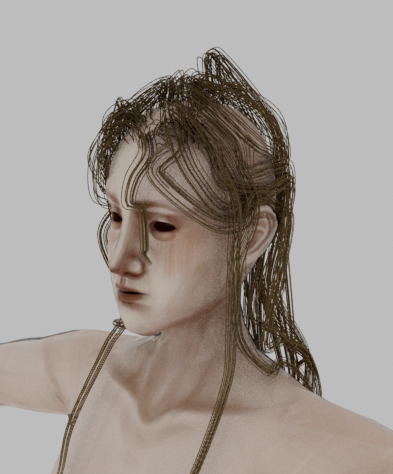
lol.
I wanted the hair curly anyway, and I didn't really want to use paint effect hair so... onwards:
Then I saw a video on using curve warp deformers for hair (GGP_Animation on Youtube) which was a cool introduction to something in maya I didn't even know existed (plugin wasn't even loaded on my machine) but I realized that if I had the curves and wanted curly hair, I could just make a sweep mesh that followed the curves! So I did, and then followed ANOTHER tutorial (CG MAGUS on Youtube) on how to make dynamic hair to figure out which option in the nHair menu I should choose ^.^ and finally! the curves were moving! --But the sweeps weren't... So I saved the preset I had made for them and applied it to the NEW hair system curves-- and finally, she had beautiful dynamic curls (ignore the eyes--temporary, just a quick 3-color ramp on spheres).
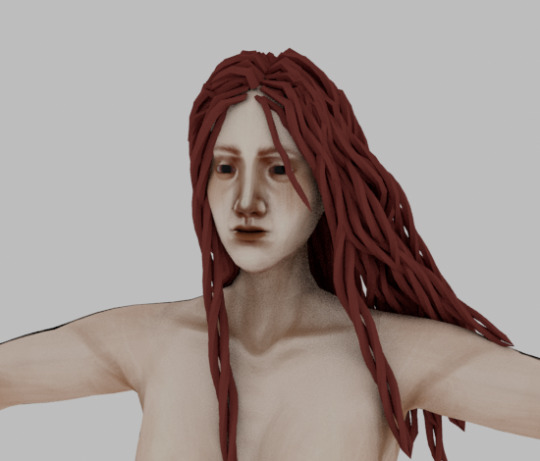
Just kidding, they're kinda ugly lol :,) but that's hopefully just because it's just a generic aistandardsurface shader with no texture. I'm going to repaint the texture on the scalp so even if it shows through it doesn't look like her hair is thinning. I'm also planning on using flair renderer (linked below), so I have to pay for that and do some testing with it to figure out how I can get the final look I'm going for. Concept portrait design below:
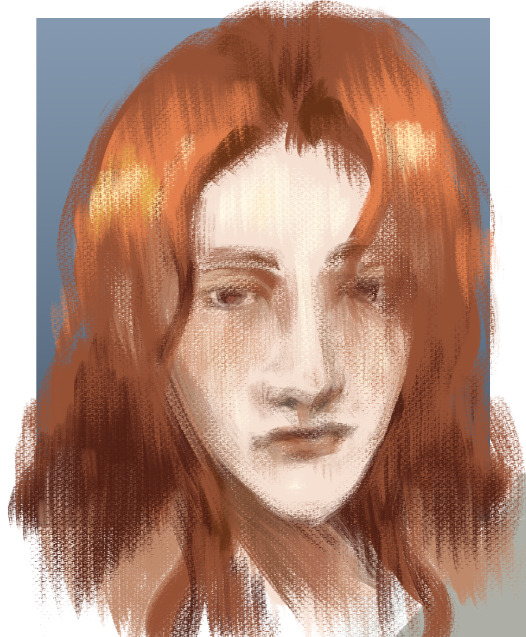
youtube
youtube
youtube
1 note
·
View note
Video
vimeo
Simulation Demo Reel
#maya#autodeskmaya#rigging#car rigging#dog rigging#quadruped rigging#facial rigging#cloth simulation#qualoth#nhair simulation#nhair#xgen#xgen IGS#hair simulation#simulation#3D#3D rigging#3D animation#showreel#demo reel
0 notes
Photo

Guest session by Mr. Shiv SundarSr.Character Fx TD at Sony Pictures Imageworks Canada.
On 29th July 2019 @ 11AM #exclusively from #ArenaAnimationKammanahalli.
Experienced in Character Effects for about 14 years now.software: Maya for cloth,hair,fur and rigid body work,Houdini cloth and Hair sim.solver used: nCloth , qualoth, syflex,marvelous for creating realistic simulation and cloth development.Grooming: nhair,shave and hair, yeti and xgen.Handling shot work, development task, environment asset setup for cloth, flesh simulation, fracture setup and rigid bodies are my some of primary skills.
Movie and Ridefilm Credits:
#CaptainMarvel #SpiderMan in SpiderVerse ( Animated Feature) #Avengers infinity wars (2018) #BossBaby ( Animated feature film) #Kungfupanda 3 ( Animated feature film) #Penguins of Madagascar 2014 (Animated feature film) #Rango (Animated Feature) #Transformers 3 Dark of the moon #Transformers Ride 3D #BattleShip #Avengers #Clonewars Episode Sesson 5 ,6 #IceAge ride film #Batman Tv series #Sultan The Warrior (Animated Feature) #ChubbChubbs #HairyScary #Camelu #TwinPrinces.
#captainmarvel#spiderman#avengers#bossbaby#kungfupanda#penguins#rango#transformers#battleship#clonewars#iceage#batman#sultanthewarrior#chubbchubbs#hairyscary#camelu#twinprincess
1 note
·
View note
Quote
Autodesk has released Maya 2020: the latest update on its 3D modelling, animation, visual effects and 3D rendering software. I've been using Maya for almost two decades now. I remember the days when you needed a Silicon Graphics machine to run it, which was expensive enough, but coupled with the price of a Maya licence you had to spend a small fortune. I'm not sure if the unobtainable price made it a more desirable application, but everyone I knew wanted to work with it. Thankfully, prices dropped over the years and now Maya is much more affordable, although many still think it's too expensive, especially when compared to other applications like Blender and Cinema 4D (both of which appear, along with Maya, on our guide to the best 3D modelling software). Since its early days, Autodesk has released updates annually. These usually saw new tools and features being added to its arsenal; these features were welcome additions, but were often aimed more at higher-end animation and simulation work. Over the past few years, maybe even longer, we have seen a shift in the direction Autodesk have taken with the updates. They are now more focused on improving existing systems and implementing features voted on by the community. This has transformed Maya into a much better, all-round application which continues to evolve and improve in a more focused way. With Maya 2020, Autodesk continue this trend of listening to their users to implement much-needed quality-of-life features. They also enlisted Blue Sky Studios to help mold the animation tools, which have also seen a huge upgrade in this release. Maya 2020: Features and performance Autodesk boast over 60 new animation features, with the biggest being improvements to the animation cache playback. Originally introduced in 2019, cache playback allowed animators to view their work in real time with little or no need for constant playblasts. This was the idea anyway, but it came with limitations. The first was a lack of dynamics support, so it couldn't be used alongside these systems. Image planes still relied on legacy systems, so they were slow and hogged memory, and it wasn't as efficient when used with dense geometry. These issues have all been addressed and make for a smoother experience. Dynamics support is included, using a new layered evaluation system. nParticles, nCloth and nBodies are now supported, with nHair, Bifrost FX and muscle systems coming later. High-resolution geometry or subdivision surface models that used Smooth Mesh were not efficient enough in 2019. They used a lot of memory and were slow to cache. In 2020, the base mesh is stored while smoothing is now handled on the GPU. Speaking of the GPU, another big update this year is Arnold 6 with full GPU rendering support, based on the NVIDIA OptiX ray-tracing engine. This has been in beta for a while but it's nice to see a full release. I've been using this more and more since I installed 2020 – it's so fast, although I am running an NVIDIA Quadro RTX 4000 so I'm not sure how it would run on lower-end cards. I no longer need to render to see model and shader updates, as they are visible in the viewport in, almost, real time. Finally, Maya has the ability to retopologise the densest of models On the modelling side of things, Autodesk have given us Remesh and Retopology tools. "It's about time!" I hear you scream. When combined, these tools will enable clean, quad-based topology but it has limitations. As good as the resulting models are, there are no options to dictate edge flow, so for game art there would still be a lot of clean-up needed. Animators can now see past and future movement with the new ghosting preview tool It seems Autodesk are now taking full advantage of the GPU as it's being used on many other tools to help speed up workflow. The Proximity Wrap tool, which is new to Maya, is an advanced version of the Wrap tool. It too uses the GPU to help calculate how the influenced geometry manipulates the surface model, making for smoother interactions. I'm looking forward to experimenting with this on future facial rigs and custom muscle systems. With Maya 2020, animation has seen significant improvements, as has rigging While we are on the subject of rigging, another new addition I am personally excited about is the introduction of matrix-driven workflows. These are a series of nodes and attributes that make rigs cleaner and less cluttered. With the offsetParentMatrix attribute, constraints could be used less and less, meaning the art of rigging is more streamlined. The one issue I do have with the new rigging tools is they aren't backwards compatible. I have many clients who still use Maya 2017 and 2018, so for me, these shiny new nodes aren't an option just yet. Should you upgrade to Maya 2020? There is so much to be excited about with this release, and I haven't even covered the modelling and speed improvements. All in all, Maya 2020 is an essential upgrade if you're an animation studio. With all the new updates, it could save you a lot of time on your projects.
http://damianfallon.blogspot.com/2020/04/maya-2020-review.html
0 notes
Text
Weekly Summary
Week 10 – 01/04 – 07/04
· Development
I spent a few days working on the gibbon animation. I managed to include rotation joints without losing the animation thanks to my well-structured rig system.
I also applied the last changes to the groom and sent it to Alastair for review.
· Area for Development / Thoughts
Smooth out the animation and correct any mesh deformations.
Research more on Nhair simulations.
I’m a little stressed right now considering university is closed during Easter, one of my friends said I could work on his computer during that time so I hope it will be able to handle hair simulations.
0 notes
Text
Working with Maya: Industry Standard Tools
Autodesk Maya, often referred to simply as Maya, is one of the most powerful 3D modeling, animation, simulation, and rendering software tools available today. Widely adopted by professionals in the fields of animation, gaming, visual effects (VFX), and virtual production, Maya has earned its reputation as an industry-standard tool. For aspiring artists, joining an animation academy in Pune can be a great way to gain hands-on experience and master this powerful software. Its extensive feature set, customizability, and cross-platform availability make it indispensable for artists and technical experts alike. In this article, we explore the key tools and features that make Maya a staple in creative industries.
1. Modeling Tools: Creating Detailed 3D Assets
Maya’s 3D modeling capabilities are second to none, enabling artists to craft intricate and detailed assets for films, games, and animations. Whether working on characters, environments, or props, Maya provides a comprehensive suite of tools for polygonal modeling, NURBS modeling, and subdivision surfaces.
Polygonal Modeling: Maya offers robust polygonal modeling tools, including extrusion, beveling, and sculpting. Artists can quickly create complex shapes using advanced symmetry and topology options.
NURBS and Curves: NURBS modeling in Maya is ideal for creating smooth, organic shapes like car bodies or product designs. The ability to manipulate curves and surfaces precisely makes it a favorite for industrial design.
UV Mapping: Efficient UV unwrapping tools help streamline the texturing process. Artists can flatten and arrange UVs with tools like Auto Seams and Unfold, ensuring that textures wrap around models seamlessly.
2. Animation Tools: Breathing Life into Characters and Scenes
Animation is Maya’s hallmark, with tools designed to meet the demands of high-quality productions.
Keyframe Animation: Maya’s intuitive graph editor and dope sheet allow animators to control timing and transitions with precision. Whether crafting subtle facial expressions or dynamic action sequences, animators have full control.
Rigging and Skinning: Rigging tools let artists create skeletons and control rigs for characters and creatures. Skinning features, like geodesic voxel binding, help in accurately attaching models to rigs, ensuring natural movement.
Motion Capture Integration: Maya supports motion capture data, making it easy to integrate realistic human and creature movements into projects. This feature is widely used in VFX-heavy films and AAA games.
3. Simulation Tools: Creating Realistic Effects
Simulation plays a critical role in creating lifelike visual effects. Maya’s simulation tools allow artists to craft dynamic and interactive scenes with ease.
Bifrost for Fluids: Bifrost is Maya’s powerful fluid simulation framework. Artists can simulate water, smoke, fire, and other particle-based effects with incredible realism.
nCloth and nHair: Maya’s nCloth and nHair systems are essential for simulating fabric and hair. These tools use dynamic solvers to mimic real-world physics, making characters and scenes more believable.
Bullet Physics: For rigid body and soft body dynamics, Maya integrates the Bullet physics engine. This is particularly useful for creating destruction effects, such as shattering walls or collapsing buildings.
4. Rendering Tools: Achieving Cinematic Quality
Maya includes world-class rendering solutions to bring projects to life with stunning visuals.
Arnold Renderer: Arnold, the default renderer in Maya, provides physically-based rendering capabilities. Its user-friendly interface and GPU/CPU rendering options make it versatile for artists.
Viewport 2.0: For real-time rendering previews, Viewport 2.0 is an excellent tool. It allows artists to evaluate lighting, shading, and effects directly in the workspace.
Custom Shading Networks: Maya’s Hypershade editor lets users build complex shading networks. This flexibility is vital for achieving specific artistic looks.
5. Scripting and Customization: Tailoring Maya to Your Workflow
One of Maya’s greatest strengths lies in its customizability. Through scripting and plug-ins, users can adapt the software to their unique workflows.
MEL and Python: Maya Embedded Language (MEL) and Python scripting allow users to automate repetitive tasks, create custom tools, and integrate Maya into larger pipelines.
API Access: For studios with proprietary workflows, Maya’s extensive API access enables deep customization and integration with other software.
6. Pipeline Integration: Seamless Collaboration
In professional environments, Maya often serves as a central hub for production pipelines.
Interoperability: Maya’s compatibility with formats like FBX, OBJ, and Alembic ensures smooth file transfers between different software, such as ZBrush, Houdini, and Unreal Engine.
Collaborative Tools: Tools like Referencing and Scene Assembly make it easier for teams to work on large projects. Changes made to assets are updated automatically in all instances.
7. Learning Maya: Building a Career in 3D
With Maya being an industry standard, learning this tool is crucial for aspiring 3D artists and animators.
Educational Resources: Maya offers extensive documentation and tutorials, both from Autodesk and third-party creators. Online courses and certifications provide structured learning paths.
Job Opportunities: Proficiency in Maya opens doors to careers in film studios, game development companies, advertising agencies, and more.
Conclusion
Autodesk Maya’s reputation as an industry-standard tool is well-deserved. Its expansive feature set, coupled with its adaptability, makes it an indispensable software for professionals in animation, VFX, and gaming. Whether you're sculpting a character, animating a sequence, or crafting stunning visual effects, Maya provides the tools you need to bring your vision to life. This is why Maya is often a core component of the curriculum at many animation institutes in Pune and around the world. For anyone looking to break into the 3D world, mastering Maya is a significant step toward a successful career.
0 notes
Text
Prof. Josh Planz
This day, Prof. Josh attended as the adviser. He suggested me keep updating knowledge and never I using an old fashion software to reduce efficiency. The
nHair system I used to generate the hair was out of date already. He told me that the disadvantages of this hair system. It had
extremely low simulating efficiency and terrible performance on the root of hair, commercial
projects no longer used such kind of technique any more. Additionally, the textures of my
animation might be too simplification, the materials on dumpling and the ground of my
animation even tend to a kind of similarity. Nevertheless, the architecture and background
should have more details. The advice from Prof. Josh revealed that my work was lack of details
on background and needed to be rebuilt the hair system on character.
0 notes
Video
NISSAN - Stronger For Longer - VFX Breakdown from Wayne Osborne on Vimeo.
Here is a VFX Breakdown from Blackbird.la for the work we need on this Nissan Navara spot. We used Yeti for the fur and Golaem crowd system for the distant wildebeests. The foreground animals were hand keyed animated, with simulated muscle and nHair dynamics for the long mane, beard and tail. It was rendered in Arnold. Dust FX was a combination of Houdini and Maya Fluids.
0 notes
Video
Tutorials - nhair deformed Yeti grooms - part1 from Mario Reitbauer on Vimeo.
We discuss a technique to deform your Yeti based hair styling by guiding grooms. This way you are not forced to use guide nodes to groom your hair and you are still able to choose between corrective grooms and nhair simulation on a shot base.
0 notes
Text
Weekly Summaries
Week 1 – 28/01 – 03/02
· Development
This week I've planned out my Personal Portfolio project, completed the Personal Proposal Form for submission and finished the animation for Haseya's turntable.
· Strengths
Finished the animation faster than anticipated which gives me more time to focus on making the cloth simulations and hair look good
Planed the structure of my projects.
· Area for Development
Create a Schedule in the form of a Timesheet that can be updated as I progress on my work
Simulate the cloth on the gloves as well, to cover the animation of the wrists.
Plan out the pipeline for the animation of the hair.
Research on fur simulations and Nhair Dynamics
0 notes